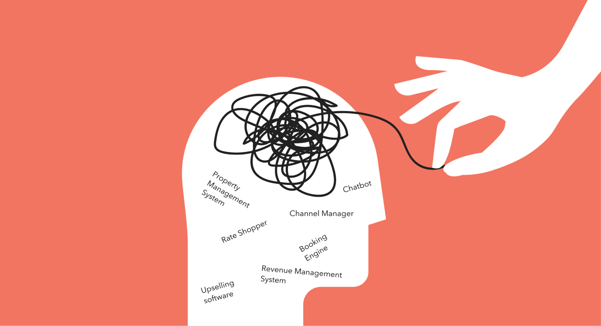
Francis Bacon once famously said “ipsa scientia potestas est” (knowledge is power). This is especially relevant in the 21st century, which has been widely acknowledged as the arrival of the information and knowledge age. Therefore, Prime Minister Narendra Modi’s announcement that the NDA government “will raise the standard of education and research, so that our universities become at par with the top global universities” was a proclamation of a positive intention.
Unfortunately, the actions of the NDA government have been at divergence with the announced intention since then.
The UPA government, apart from institutionalising the Right to Education Act in 2010 to universalise primary education, was conscious that adequate capacity in higher education, especially our premier institutions, was a necessity if the aspirational generation’s quest for betterment and access to opportunity had to be effectively addressed.
Accordingly a number of new Indian Institutes of Technology, National Institutes of Technology, central universities and Indian Institutes of Science Education and Research, and institutions focused on pure scientific research were established and adequate funding accorded to them, not only for creating entirely new campuses with proper infrastructure but also for hiring faculty.
Creation of capacity has to be accompanied with a focus on the quality factor in education and the UPA government was conscious about strengthening the role of the statutory institutions such as University Grants Commission and All India Council for Technical Education and National Council for Teacher Education and respecting their autonomy in their functioning in order to set high academic standards for the institutions and the faculty. Several initiatives were undertaken to create awareness about the methodologies being used by international academic ranking institutions and get our institutions to proactively engage in working on those parameters.
There were innovative programmes such as the “Faculty Recharge” plan, the faculty exchange programme to invite visiting faculty and other measures such as increasing the retirement age of teachers in universities and colleges, for addressing the shortage of faculty.
Realising that most post-graduate and research students in government-run institutions came from modest economic or social backgrounds, the ministry and UGC were particular that there was adequate care taken in the funding for the departments, faculty and scholarships, especially for the socially underprivileged.

So the current reality in higher education is in stark contrast to the positive environment that prevailed during the UPA government. The NDA government seems to be in a systematic way adversely impacting the morale of all the stakeholders. In fact, it appears that the government is waging a four-front war against higher education.
The NDA government’s major contribution has been to starve the sector of funding. By drastically slashing funding for the University Grants Commission (UGC) by 55 per cent (from Rs 9,315 crore in 2015-2016 to just Rs 4,286 crore in 2016-17), the NDA has effectively put the higher education sector in deep freeze. Because of the move, the UGC has been forced to drastically slash allocations to universities. All new courses are now to be “self-financed”. This means the government will reduce support for infrastructural and pedagogic requirements.
Colleges would, in turn, be forced to pass on this burden to students (as in Panjab University, when fees was hiked by 1,110 per cent or in IIT-Bombay, where fees were hiked by 55 per cent while hostel fees was hiked by 300 per cent) or to reduce the intake of students (for example, there has been an 84 per cent cut in MPhil and PhD seats in Central University of Gujarat, Jawaharlal Nehru University etc. Similarly, over 6,000 seats are vacant in the IITs, IIMs and NITs, while over 7,000 are vacant in Delhi University).
The government’s secondary contribution has been to make higher education and research inaccessible to students. The NDA has severely constricted the scope and scale of scholarships. For example, scholarships worth Rs 5,000-8,000 for MPhil and PhD students selected for research programmes have been abruptly cut. Similarly, since its taking of office, the NDA government has deliberately withheld Rs 13,107 crore of the post-matric scholarship for Dalits and Adivasis (Rs 10,236 for SCs and Rs 2,871 for STs). Furthermore, it has cut funding for research centres across the country that pursue research on Dalits, BR Ambedkar’s philosophy and social justice (ironically, it has done so while it is positions itself as a pro-Dalit party).
When students protest against such high-handedness (“Occupy UGC” protests are a case in point), they are either harassed officially by the state machinery or unofficially by the ABVP (remember Rohith Vemula, Richa Singh and Gurmehar Kaur?). Rather than curbing such vile attacks on individual and institutional freedom, the NDA covertly (and sometimes overtly) endorses them. That is why India’s finance minister, Arun Jaitley, dismissed universities as “alliance(s) of subversion”. This systematic targeting of students undermines the very purpose of our education system, which aims to produce aware, thinking and conscientious minds.
An often overlooked byproduct of the NDA government’s above mentioned policies is that they institutionalise casteism in our education system. The UPA government had started in our central universities 35 “centres of studies of social exclusion and inclusive policy” with the stated objective of including the socially marginalised sections into mainstream studies in order to give them access to better and more diverse opportunities.
Unfortunately, these centres have been neglected and the number not augmented. The UPA government had increased substantially the number of scholarships that were given to Scheduled Castes, Scheduled Tribes, Other Backward Castes and Minorities, the numbers of which have remained stagnant ever since the NDA government came to power. Lakhs of Dalits and Adivasis, who depend on scholarships and bursaries in their quest for a better future, no longer have the support of the government. The government’s policy also deprives minority and needy students of a better future. As a nation, how can we rise to ever greater heights if we exclude and dis-empower fellow Indians?
Impinging on the autonomy of institutes of higher learning (both central and state) and a studied apathy towards vacant teaching positions are the other moves through which the NDA is strangulating higher education. Forty-three per cent of all teaching positions in higher education institutions have been lying vacant simply because the NDA government withheld the appointments.
The UPA government had taken very clear steps to augment the faculty positions by an innovative measure called the “Faculty Recharge” programme by the UGC whereby faculties from abroad could be inducted into our central and state universities. About 265 positions were filled due to this one measure alone. Unfortunately, it has been abandoned by the current government. Another measure to address the faculty shortage arising out of the expansion of our higher education institutions and as a one-time measure that would temporarily meet the need, the retirement age of teachers, teaching in universities and colleges, was increased from 60 to 65 years. This did help the situation temporarily but despite the step, the faculty shortage remains grim and there is a dire need for the government to be much more proactive on this front.
Etymologically, education comes from educere which means to “bring out” or “lead forth”. Only in the unfettered environs of academia can we search for answers to existential and essential questions. In a globalised world, universities also act as cross pollinators of talent and ideas. It is through this dialectic that solutions to pressing problems affecting us often emerge. The NDA is neither leading the education sector to commanding heights nor allowing us to bring forth the best in our children. For the future of our nation, it would do them well to pay heed to Pandit Jawaharlal Nehru’s exhortation that “a university stands for humanism, for tolerance, for reason, for the adventure of ideas and for the search of truth”.
[“Source-dailyo”]






